Sustainability is an ongoing challenge for all newsrooms, particularly when it comes to revenue generation. In a landscape where advertising revenue can no longer be relied upon to entirely support a news service, publishers must find increasingly adventurous and innovative means of funding journalism – while maintaining independence. This list provides some very broad explanation for the different means by which digital news publishers can make money. We also discuss (primarily anecdotal) feedback on the effort to outcome ratio associated with some of the less common sources of income. It is intended to spark ideas only and does not appear in order of importance.
Do not attempt this all at home!
This is a long list; we strongly recommend picking 2-3 areas of focus and then adding one product/stream at a time to expand via trial and testing, and customising these to your audience demographics.
Advertising
Let’s start with the basics…
Display
In print it’s your standard advertising artwork, generally sold via rate card.
On websites it’s your old faithful banners and blocks, generally managed:
- directly via media kit (self-loading, ie you manage it)
- programmatically; most commonly via Google
- and/or self-service; a system where advertisers can book directly do your site.
Pricing for display advertising on websites can be sold as:
- Cost per thousand views,
- Cost per click, or
- Run of site at a set fee, often with a premium on key positions like the front page.
Classifieds
Have largely been replaced by online marketplaces, but can still be a cheap way for businesses to advertise their services and for individuals to reach a defined market with items.
There are range of tools available to make management of online classifieds a simple addition to websites.
Business Directory listings
A great way to boost SEO and traffic while providing an affordable way to engage local businesses with advertising on your site. This is particularly attractive to those businesses unlikely to have display ad artwork or the desire to produce it.
Advertorial or sponsored content
Needs to be backed by strong advertising and editorial policies, clearly defined and labelled as paid content so that any reader could reasonably identify it. Each publisher will have a different approach to how much of content (if any) is appropriate for its audience, on what topics and in which circumstances it might be offered to advertising partners. The most important element is transparency and maintaining audience trust.
Find out more about best practice and standards for digital ad sizing, or have a watch of our shop-talk webinar on online advertising.
Newsletters
This also falls under advertising, but people sometimes think of it separately, so we’ve singled out the newsletter channel here.
Display advertising
Like your website, you can include banners, blocks and logos in a newsletter template and sell that space. Often priced on a cost per open basis, ie how many readers open your email.
Other newsletter content
This could include advertorial content; ‘and now a word from our sponsors!’ and/or paid links. Note, advertising policies should cover all distribution channels for your organisation.
Reader Revenue
Direct contributions from your audience
Subscriptions
Putting some or all content behind a paywall and requiring a subscription payment to access it. This is a standard way for large newsrooms to generate income. Local news publishers have varying views on access to news services for all vs the need to generate funds. Some make public interest stories free and charge for lifestyle content. Others bring in a paywall after a certain number of stories. Many local newsrooms prefer to run a free service and rely on other forms of income. Either way, it’s a primary source of income for many news outlets.
Memberships
Similar to subscriptions, but less compulsory. Some newsrooms offer additional content or newsletter services to members for a fee. Membership benefits can include entry to events, merchandise, exclusive or enhanced affiliate content, tickets to partner events, ad-free content for audiovisual products. Some newsrooms in the US have found people prefer experiences to swag (eg invited to events rather than things in the mail). The range of benefits you can offer here will depend on what else you’re doing throughout the year. For most newsrooms, it’s more-regular, curated newsletters.
One-off payments
Financial contributions of small amounts, which can be regular or one-off, but generally don’t have a direct benefit associated (besides supporting the newsroom). Tools like PressPatron and Buy Me A Coffee widgets are often used for this type of contribution and work most effectively when paired with a strong value proposition and some promotion. Think about where you place the ask on your site and reinforcing your ask in your social media and newsletter settings. The Guardian does this style of fundraising particularly well. Sometimes publishers feel hesitant about asking for contributions, but ‘closed mouths don’t get fed’ – successful newsrooms tend to ask more. Otherwise put: ask everyone you know and ask everyone who knows you. And use mission-focused language in their messaging.
Philanthropy & grants
Foundations and individuals who are particularly interested in strengthening democracy through media diversity may contribute directly to newsrooms and/or support individual journalists to do broad reporting work, or focus on an area of interest that aligns with the funders’ values (eg. environmental reporting). Publishers should also keep an eye on relevant small business grants and programs, and any media-related grant opportunities that might be announced by Government or private funders (eg. Meta grants through the Walkley Foundation).
Social media
Make like the influencer you are and monetise your socials.
Sponsored posts
Like your newsletter, your social channels are another way to reach an engaged audience for clients. This can be done through direct, identified shout-outs and shared posts – or get inventive!
Pre-roll video
Newsrooms producing audiovisual content can add pre-roll video advertising (you know, where your video will start playing in 10 seconds) generally managed through a self-service or programmatic booking system.
Direct to audience
A higher risk area of revenue that fewer newsrooms pursue, but are effective for some.
Events
Some newsrooms coordinate community events such as fun-runs, writers’ festivals, photography exhibitions, or business breakfasts as revenue sources. Organising events can be a lot of work, so it’s worth considering your bandwidth capacity before investing all your time in this type of activity, or partnering with another organisation or community group to share the workload. But, once established, they are often repeatable and scalable. And you have a free promotional tool! Some ideas include: hosting an annual birthday party for your publication; chat n chew lunches with key speakers on interesting topics for members or supporters; or a simple fundraising dinner can be a good way to engage with local leaders.
Merchandise sales
T-shirts, hats, notebooks, stickers, calendars featuring your favourite local images for the year or a catchy local in-joke… This generally requires investment in the stock, which is an outlay and a potential risk, but can be a good way to promote news services in the community. Will people pay for a t-shirt with your news brand on it? Maybe, and that’s your call to consider.
Affiliate links and programs
Otherwise known as kickbacks.
Coupons & deals
Mention ‘XYZ News’ for 10% off, or receive a 20% discount when you use this code. This type of arrangement generally means the affiliate company will pay an agreed amount per customer or sale to the publisher, identified by a trackable source. For clients it means reducing the risk to return ratio by only paying for results. For publishers it generally works best where product reviews and recommendations are a feature part of your service.
Guides & promotional services
Production of bespoke services such as Tourism Guides, advertising/promotional artwork for use in other settings, delivery of flyers or printed materials with print distribution, printing services (in some instances)… These are just a few ideas in this income category.
Professional Services
Ya got the skillz to pay the billz!
So maybe offer those skills to other businesses.
Training Services
Use your knowledge to offer learning sessions on things like media literacy, how to spot misinformation and deep-fakes, photography skills, writing fundamentals – you might even find some new contributors!
Copywriting
One thing all publishers have access to is professional writers.
Graphic design services
Layouts, logos, typesetting, etc.
Audiovisual content production
If you’re doing podcasts or video content, why not offer those services to local businesses for their own promotional or training content, audio recordings (on hold or phone directory recordings). Team up with your local funeral home to offer audiovisual packages for obituaries, distributed via the news services and the funeral provider. Who else could you partner with in your local area?
What did we miss?
Got a revenue source that’s working for you and not listed above, or a correction? We’d love to hear about other ways digital news publishers can make money. Email communications@lina.org.au.


